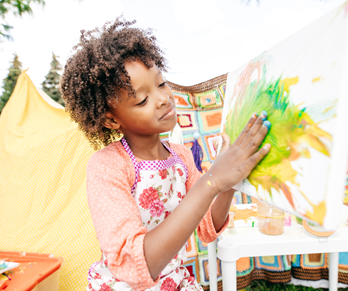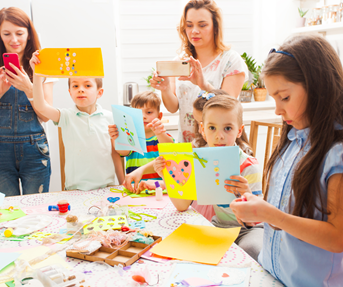Have you ever wondered why teachers teach a particular topic or activity?
Demitra engages the viewers in understanding the English Language Arts K-4 standards and several activities to increase comprehension. Would you like to know your child's current reading level? Schedule your session today at www.mytutorhelpsme.com
Three Key Tips to Keep Your Kids Engaged in Reading and Writing Over the Summer
Monday, April 22, 2024 by Demitra Bryant | Tips
Three Key Tips to Keep Your Kids Engaged in Reading and Writing Over the Summer

Summer break is a wonderful time for relaxation and fun, but it's also a crucial period to maintain and even enhance your child's literacy skills. A break from the regular school routine doesn't have to mean a break from learning. Here are three engaging tips to keep your young scholars excited about reading and writing, even while they're on vacation!
1. Create a Summer Reading Journey
Why this tip?
Summer offers a unique opportunity for children to read for pleasure, away from the pressures of school assignments. Encouraging reading during the summer helps maintain reading skills, improves vocabulary, and helps develop empathy and a broader worldview.
Activities:
- Book Passport: Create a “book passport” for your child where they receive a stamp for each book completed. You can include different genres and authors to diversify their reading experience.
- Reading Challenges: Set up weekly or monthly reading challenges that can be fun and attainable. For example, read a book with a blue cover, a book about animals, or a book set in another country.
2. Engage in Storytelling Projects
Why this tip?
Writing isn't just about putting pen to paper; it's about expressing ideas, crafting stories, and communicating thoughts. Summer projects can help children find their own voice and improve their writing skills in a creative and engaging way.
Activities:
- Create a Vacation Journal: Encourage your child to keep a journal during their summer travels or a daily diary. This can include descriptions of places they visit, new foods they try, or interesting people they meet.
- Write Postcards: If they're traveling, have them send postcards to friends and family. If they're staying home, they can create fictional postcards from exotic locations using their imagination.
3. Incorporate Technology in Learning
Why this tip?
Leveraging technology can make learning interactive and exciting. It also prepares children for the digital world by improving their digital literacy.
Activities:
- Educational Apps: There are numerous apps available that focus on literacy and creativity. Apps like Epic! provide access to thousands of books, while others like Storybird allow kids to create their own stories with beautiful illustrations.
- Interactive Writing Blogs: Encourage older children to start a blog or a digital scrapbook where they can document their summer activities, write reviews of books they've read, or share their own short stories.
Conclusion
Summer doesn't have to mean a pause in learning. By integrating these tips into your summer plan, you're not only helping your child stay connected to reading and writing, but you're also setting them up for a seamless transition back to school. These activities will keep their minds engaged, encourage creativity, and make learning a fun part of their summer adventure!
Remember, the key to a successful summer learning plan is flexibility and fun—mix and match activities to suit your child's interests and plans! Enjoy the summer of learning!
Demitra
Experiencing the Solar Eclipse: A Family Adventure in Learning
Monday, April 8, 2024 by Demitra Bryant | Uncategorized
Experiencing the Solar Eclipse: A Family Adventure in Learning

As the moon passes between the Earth and the sun, casting its shadow and briefly turning day into night, we're given a front-row seat to one of nature's most awe-inspiring spectacles: a solar eclipse. This celestial event is not just a rare opportunity to witness the wonders of the cosmos but also a perfect moment for families to explore, learn, and bond over a range of educational activities. From art and science to math and storytelling, a solar eclipse opens up a universe of learning opportunities for elementary and middle school students. Here are six family-friendly activities to make the most of this extraordinary event.
Eclipse Diary: Keeping an Eclipse Memory

Encourage your children to maintain an eclipse diary, documenting their thoughts, feelings, and observations before, during, and after the eclipse. This activity is not only a fantastic way to practice expressive writing but also helps in sharpening observation and reflection skills. They can jot down what they see, how the environment changes, and anything else that captures their imagination during this celestial phenomenon.
Vocabulary List: Building an Eclipse Lexicon
Create a list of eclipse-related vocabulary words like "corona," "umbra," and "penumbra." Challenge your kids to find the definitions and use them in sentences. This enriches their vocabulary and deepens their understanding of the eclipse, blending science with language arts in a fun, engaging way.
Eclipse Art Gallery: A Canvas Under the Cosmos

Art can be a powerful medium for children to express their feelings and thoughts about the eclipse. Set up a mini-art studio where they can draw, paint, or use digital tools to create artworks inspired by the eclipse. This not only fosters creativity but also allows children to visually communicate their experience of the eclipse, making science an artful adventure.
Eclipse Shadow Measurement: Math Meets Nature
Use the eclipse's shadows to dive into a practical math lesson. By measuring the length of shadows cast by objects (like a stick in the ground) during the eclipse, families can explore basic geometry and trigonometry in a hands-on way. This activity demonstrates the relevance of math in understanding natural phenomena and encourages kids to see math in the world around them.
Eclipse Time-Lapse Video: Capturing Time
With a smartphone or camera, families can create a time-lapse video of the eclipse's progress. This not only captures the event in a dynamic way but also integrates technology and art, teaching children about patience, observation, and the beauty of nature's pace. It's a wonderful way to hold onto the memory of the eclipse and share the experience with others.
 Budgeting for Eclipse Viewing: Practical Math in Action
Budgeting for Eclipse Viewing: Practical Math in Action
Planning a future trip to view another eclipse can be an exciting family project that incorporates budgeting and planning skills. Research travel costs, accommodations, and necessary viewing equipment. This activity not only excites anticipation for another astronomical event but also teaches children valuable lessons in budgeting, saving, and planning—all crucial life skills.
Beyond the Shadow: Learning and Connection
A solar eclipse is more than just a rare astronomical event; it's a gateway to curiosity, learning, and family bonding. By engaging in these activities, children can explore various subjects, from science and math to art and writing, all while experiencing the magic of the cosmos together with their families. These activities not only educate but also inspire, creating lasting memories and fostering a lifelong love for learning and exploration.
As we look forward to witnessing the dance of celestial bodies, let's use this moment to ignite the spark of curiosity in our children, encouraging them to explore, question, and learn. The solar eclipse is a reminder of the wonders that lie just beyond our grasp, inviting us to reach out and discover them together. So, grab your eclipse glasses, gather your loved ones, and get ready for an educational adventure that's truly out of this world!
Enjoy the day!







